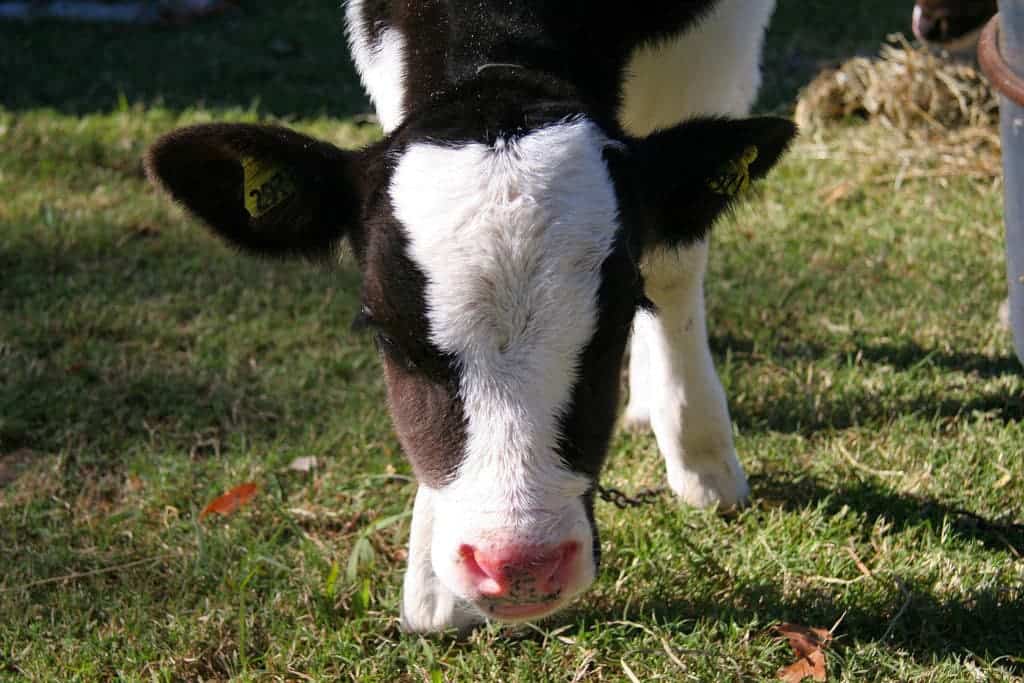The livestock sector alone could soon use almost half of our greenhouse gas emission budget for maintaining global warming at 1.5˚C, a new study concludes. Researchers urge people to reconsider meat and dairy consumption.

The are several reasons to reduce our meat consumption — particularly red meat. Even ignoring the ethical argument, meat provides a plethora of environmental problems. For instance, beef production requires way more water than a myriad of other, equally nutritious options. Intensive livestock production also requires large quantities of harvested feed, which translates to extremely high land usage. From a purely resource-focused perspective, it also doesn’t make sense: a recent analysis found that more than 80% of farmland is used for livestock but it produces just 18% of food calories and 37% of the protein consumed by humans. To make matters even worse, meat is also responsible for a hefty chunk of our greenhouse gas emissions.
The UN’s Food and Agriculture Organization (FAO) estimates that livestock (including poultry) accounts for about 14.5% of anthropogenic greenhouse gas emissions, and a recent study found that reductions in meat-eating are essential to avoid dangerous climate change — particularly with a rising global population.
“Feeding a world population of 10 billion is possible, but only if we change the way we eat and the way we produce food,” said Prof Johan Rockström at the Potsdam Institute for Climate Impact Research in Germany, who was part of the research team. “Greening the food sector or eating up our planet: this is what is on the menu today.”
Now, a new study by Dr. Helen Harwatt, an animal law and policy fellow at Harvard Law School, concludes that if we want to limit climate change, we need to take more of our protein from plant sources, not animals.
The article reports that the current livestock population in the world is around 28 billion animals. This industry is the highest source of two major greenhouse gases: methane and nitrous oxide. Although methane has a much shorter lifespan compared to carbon dioxide, it has an 85-times-greater global warming potential than carbon dioxide over a 20-year time frame. As a result of the growth of the industry, methane emissions from the livestock sector are projected to rise by 60% by 2030 — in a timeframe where our planet needs a reduction, not an increase of emissions.
“Given the livestock sector’s significant contribution to global greenhouse gas emissions and methane dominance, animal to plant protein shifts make a much-needed contribution to meeting the Paris temperature goals and reducing warming in the short term, while providing a suite of co-benefits,” Harwatt said.
She continued to say that global leaders should start to pay attention to this issue, particularly considering the upcoming UN meeting on addressing climate change (COP24).
“Failure to implement animal to plant protein shifts increases the risk of exceeding temperature goals and requires additional, and unrealistic, greenhouse gas reductions from other sectors. The current revision of national contributions to meeting the Paris Agreement from 2020 onwards should ideally integrate animal to plant-protein shifts. As a next step, the COP24 in December this year provides an excellent opportunity for policy makers to start this important conversation.”
Harwatt also laid out the skeleton of a plan to start working on reducing meat consumption:
- Acknowledging that current numbers of livestock are at their peak and will need to decline (‘peak livestock’);
- Setting concrete targets to transition away from livestock products starting with foods linked with the highest greenhouse gas emissions such as beef, then cow’s milk and pig meat (‘worst-first’ approach);
- Assessing suitable replacement products against a range of criteria including greenhouse gas emission targets, land usage, and public health benefits (‘best available food’ approach).
She also expressed hope businesses can spearhead this initiative, reducing the purchase of animal products — tackling the ‘worst first’ and replacing them with best available foods.
“The food sector is already making progress on these issues and demonstrating that it’s commercially viable to incorporate animal to plant protein shifts. We need policy makers to enable the creation of Paris-compliant food systems on a much larger and faster scale – and animal to plant-protein shifts play a key role”.
Journal Reference: Including animal to plant protein shifts in climate change mitigation policy: a proposed three-step strategy; Climate Policy; https://doi.org/10.1080/14693062.2018.1528965; Helen Harwatt






